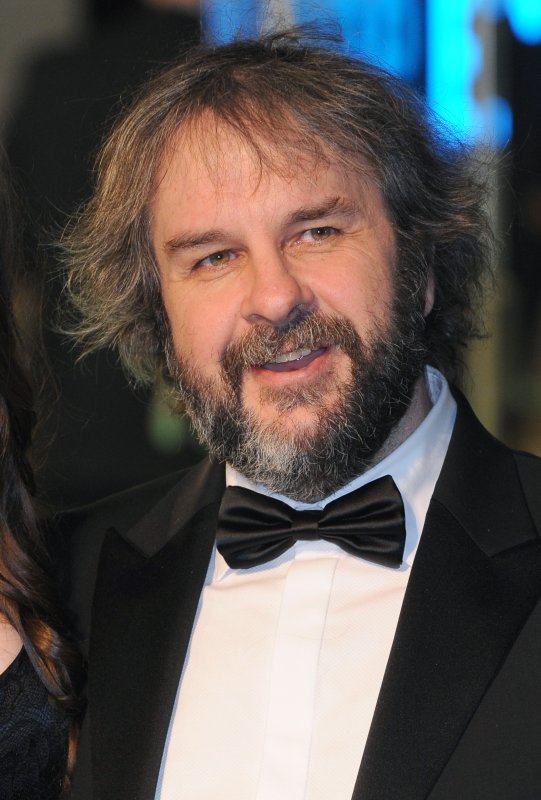New Zealand director Sir Peter Jackson attended The UK premiere of "The Hobbit: An Unexpected Journey" at The Odeon Leicester Square and Empire Leicester Square, in London Dec. 12. UPI/Paul Treadway |
License Photo
As film reviewers weighed in on "The Hobbit" -- the latest offering from "Lord of the Rings" director Peter Jackson -- many gave space in their reviews for a discussion of something beyond story, acting and directing, choosing to focus on technology in the projection booth.
In a small, select number of the theaters showing "The Hobbit," the film is being shown at 48 frames per second, twice the traditional 24-per-second rate that has been around nearly as long as motion pictures.
Jackson and others -- director James Cameron is reportedly considering frame rates as high as 60 frames per second for several planned "Avatar" sequels -- have turned to technology for what they say is a more "immersive" experience for movie audiences.
Whatever the result -- and the jury is still out for some -- it represents yet another example of moviemakers turning to technology to lure audiences into theaters and away from the historical nemesis of movies, television.
That is becoming more difficult, as large flat-screen TVs and sophisticated sound systems create "home theaters" that offer a viewing experience to rival what's available in the darkened auditoriums at the local cineplex.
Moviemakers began to see television as a threat in the 1950s, when "the box" began to proliferate in American living rooms.
Their first technological counteroffensive was wide screen formats, at attempt to seduce audiences with something the small, almost square television screen could not match.
Nearly all motion picture studios utilized wide-screen formats, and films began to include title cards announcing Cinerama, CinemaScope, VistaVision and a host of others processes.
Another technological weapon in the moviemakers' competitive arsenal -- less than a success when introduced in the early 1950s but very popular in its modern revival -- is 3D.
It's often combined with IMAX, a large-format process using film almost twice as wide as traditional 35-millimeter, for an "event" offering intended to make a visit to the movie theater something special.
Even here, though, motion pictures are feeling competition from television as TV manufacturers have begun offering home 3D televisions, although they have yet to gain widespread enthusiasm, mostly held back by sparse programming.
Intriguingly, the high-frame rate of "The Hobbit" and its offering of higher resolution is a singular case of movies trying to catch up to television rather than attempting to stay ahead: High definition televisions, or HDTVs, have been around since the 1990s.
It's that offering of high definition, along with the "movie-like" 16:9 ratio wide screen of modern flat-screen televisions, that makes the home theater a serious competitor to motion pictures.
And interestingly, the attempt to catch up by offering a "high-resolution" 48 frames per second has been a major complaint of many reviewers of "The Hobbit," who've said the technology robs the picture of the "warm," color-infused look of traditional movies and replaces it with a pin-point sharp but "sterile" look -- just like a TV.
One can take heart, however, audiences in the majority of theaters showing "The Hobbit" will see it at 24 frames per second -- just like in days of old.
So technology marches on ... or possibly not.















